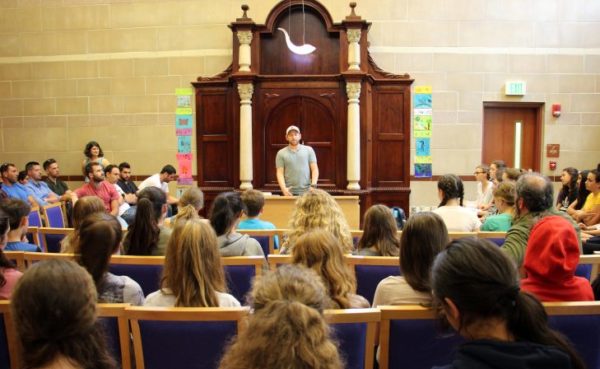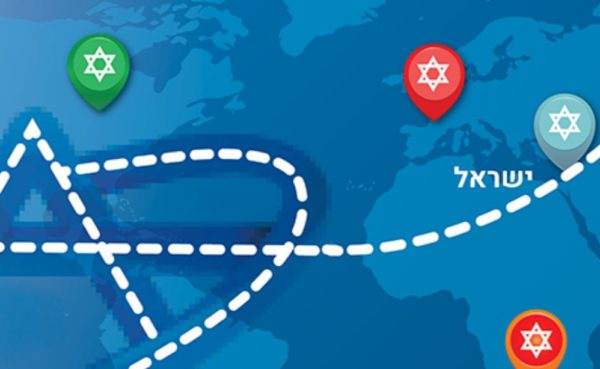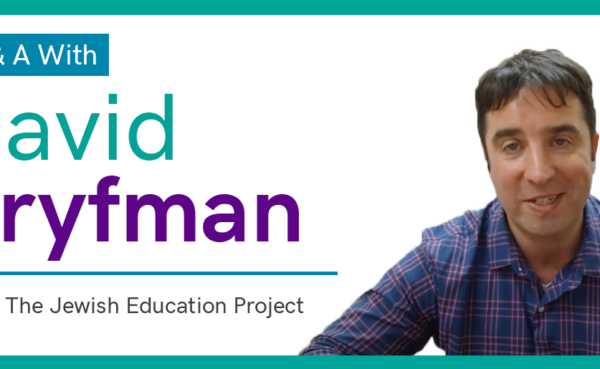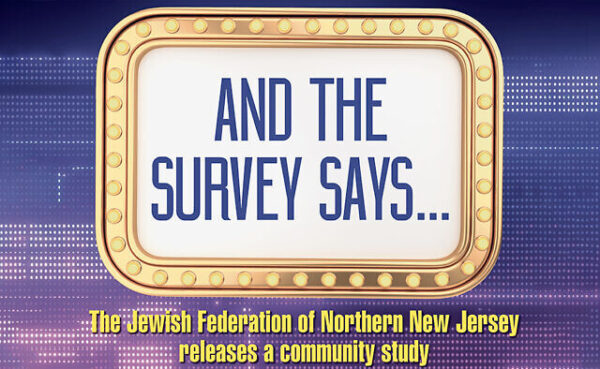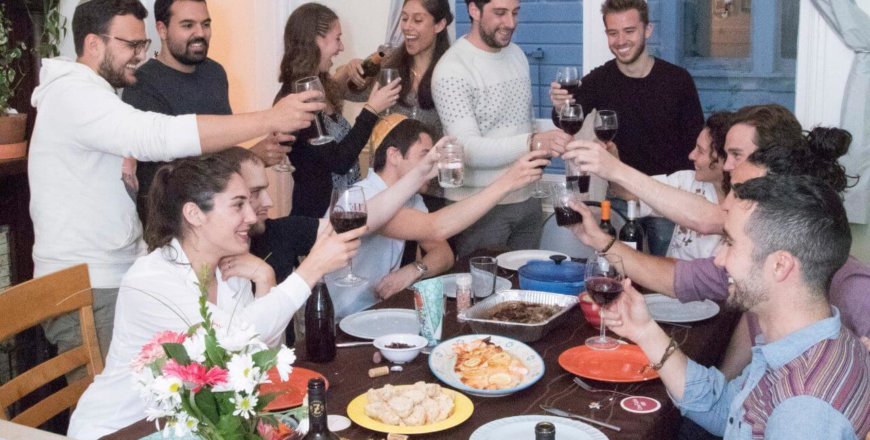
Jewish Engagement As We Know It: Are We Measuring What We Think We Are?
By Valerie Feldman, PhD
Lately, I’ve been thinking a lot about the diverse ways in which people engage in Jewish life, and how this matters for Jewish community leaders who are concerned about declining Jewish engagement. My older brother, who by most measures would be categorized as an unengaged Jew, comes to mind. For most of his adult life, he has not belonged to a congregation or participated in organized Jewish activities, but he feels a strong connection to his Jewish identity, his Jewish heritage, and the Jewish community. He expresses this emotional engagement in different ways, maintaining a loose network of Jewish friends (many of whom are also lacking strong connections to organized Jewish life) among his larger friend group, and embodying Jewish values in the way that he treats and connects to others in the world.
I know that my brother is not unique in this regard. At Rosov Consulting, we frequently measure levels of Jewish engagement for program participants and the target populations of initiatives. This helps us assess the impact of our clients’ interventions and, indirectly, may also provide some measure of the vibrancy and connectedness of the Jewish community as a whole. This latter piece is especially important, as understanding the peaks and valleys in engagement can inform funders and community leaders about where and how to direct resources to build and support thriving Jewish community.
The question of how we measure engagement is as much an epistemological one as it is methodological. Which is to say, the way we measure engagement has important bearings on our understanding of how engaged the Jewish community actually is. Conceptually, engagement can encompass both emotional and behavioral aspects of an individual’s connection to Jewish life. Yet, we typically measure traditional and recognizable Jewish behaviors to understand engagement. The underlying assumption here is that the more people participate in Jewish experiences and behaviors, the more attached people will feel to Jewish identity, values, and community, and the more they will integrate these feelings into their sense of self and how they move through the world. In other words, Jewish engagement is an iterative cycle of “doing Jewish” that presumably leads people to make Jewish meaning in their lives, which may then lead them to “do Jewish” even more, and so on. We focus on behaviors primarily because they provide concrete evidence of commitment to Jewish life, and a window into this iterative cycle of Jewish engagement.
Our clients and community leaders often have specific expectations of what strong Jewish engagement does or should look like. Supporting Israel advocacy organizations and expressing a love for Israel are seen by most as a sign of deep Jewish engagement, as are behaviors like regularly lighting Shabbat candles or socializing primarily with Jewish friends. However, our evaluations and research have surfaced many ways that people engage Jewishly, and some of these findings run counter to dominant expectations. Given this, how do we accurately measure and communicate the varieties of Jewish engagement in the world, even—or especially when—our clients have specific expectations about what Jewish engagement does or should look like?
Because of its open-ended nature, qualitative inquiry tends to be better suited to surfacing unexpected modes of Jewish engagement and meaning making. Let me share two qualitative case examples from Rosov Consulting’s work:
Building and Participating in Jewish Community
In evaluating Jewish interfaith programs, we learned that interfaith community members sometimes understand what it means to participate in Jewish community differently than their program providers. Organizations serving this demographic recognize its diverse needs and interests—some people are just learning about or introducing Jewish life to their families, while others seek deeper learning about Jewish texts and spirituality—so they tend to provide flexible à la carte experiences, with the intention that interfaith couples and families feel supported, welcomed, and integrated into the Jewish community in a way that makes the most sense for them. What our clients did not anticipate was the importance for participants of connecting to an interfaith community, even if there is no Jewish learning or practice involved. Socializing with a community of people who are “like them”—those who share Jewish values and the experience of balancing Jewish and other faith traditions in their relationships—is partly how they create meaningful Jewish lives. Rather than feeling judged or having to explain themselves in Jewish spaces, with other interfaith couples and families participants can speak comfortably about shared challenges, questions, and experiences. Building and participating in this community, in and of itself, is “doing Jewish.”
Engaging with Israel
Likewise, when it comes to Israel, we have learned that turning toward, turning away, and turning against can all be expressions of meaningful ways of encountering Israel. Typically—though of course, not always—clients have expressed a desire for their programs to produce stalwart Israel advocates who demonstrate a love for Israel in action. However, in speaking to the alumni and participants of Israel-related programs, we found that, for some, their Zionism goes hand-in-hand with protesting policies and practices of the Israeli government, because of their commitment to tikkun olam. Others reject any criticism of Israel’s policies, believing such discourse to be aligned with anti-Zionist and anti-Semitic sentiments. Still others expressed a desire to be more engaged with Israel—because they know how important it is to Jewish identity, history, and community—but explain that they shy away from demonstrative engagement because of their disdain for explosive political conflict. Finally, some reject Zionism altogether, asserting that the current state of Israel, its policies, and practices do not reflect their personal understanding of cherished Jewish values. While some of these outcomes do not align with program providers’ desires, participants made it clear that their chosen actions are meaningful expressions of their personal engagement with Israel.
While these perspectives are not entirely surprising, the striking feature of these conversations was that all of the people in these evaluations care very much about engaging with Jewish life. Had these individuals’ programs been evaluated using only traditional survey indicators of behavioral or attitudinal engagement, these different engagement modalities might have gone unrecognized. It seems plausible that the often-referenced problem of quantifiably declining Jewish engagement may be, to at least some degree, a problem of valid measurement.
Returning to the original question—how do we accurately measure and communicate Jewish engagement?—it is important to acknowledge that validity of our engagement measures is always determined in part by our clients’ programmatic interests and goals. However, the Jewish professional community wants (and needs) honest feedback about the effectiveness of programs to engage Jewish people, and, in many ways, our work acts as a communicative bridge between the expectations and hopes of program stakeholders and program participants. Newer generations of Jews—my brother among them—are identifying, practicing, and connecting to Jewish life in new ways, some of which are more “DIY” and less program—or institution—centric than in the past. The insights above stand as a reminder to those of us in the consulting world, but also to Jewish communal professionals, to maintain a stance of empathy and curiosity when making sense of Jewish engagement. By using appropriate methodological tools—for example, incorporating qualitative or mixed methods data collection when possible and appropriate, as well as cognitive tests to establish the validity of survey measures—we can ensure that we are listening for what is there, rather than what we hope for or expect.
Valerie Feldman, PhD, is a Senior Project Associate at Rosov Consulting
